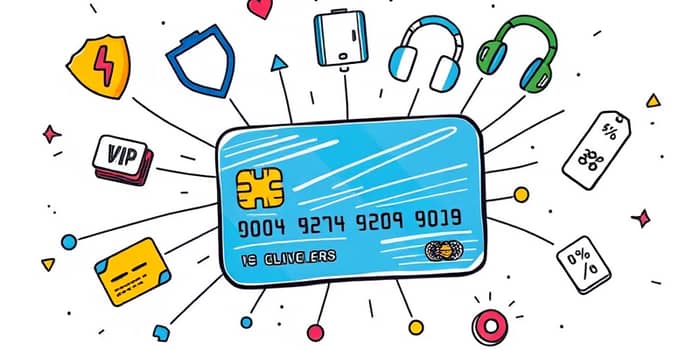
Every time you swipe, tap, or insert your credit card, you unlock an opportunity beyond simple transactions. Most cardholders focus on points or cash back, overlooking a treasure trove of hidden advantages. This guide reveals little-known credit card benefits that could save you money, enhance your travels, and elevate your daily life.
Many premium and mid-tier cards include protection that extends well beyond the point of sale. If a purchase is stolen, lost, or damaged within a specific window—often 60 to 90 days—you can file a claim. Likewise, certain cards automatically extend an item’s warranty by an additional year or two.
Here are some of the most valuable and underused safeguards:
Coverage details vary greatly among issuers. To illustrate, consider this quick comparison:
By understanding these features, you can avoid losing unspent rewards when replacing or repairing an expensive purchase.
Travel-focused cards often boast a menu of protections buried in the fine print. These can add real peace of mind—and significant savings—on flights, hotels, and ground transport.
Key benefits include:
With average first-checked-bag fees around $35 per segment, a card that waives two bags can pay for itself in two round trips. Coupled with buried in the fine print policies, these perks often go unnoticed until urgency strikes.
Beyond tangible protections, credit cards unlock doors to VIP events, exclusive dining reservations, and early ticket sales. A dedicated concierge service can secure hard-to-find reservations or assist with last-minute travel changes.
Consider these lifestyle boosters:
By learning to leverage concierge and exclusive experiences, you transform everyday interactions into memorable moments.
In 2022, American consumers earned $41.1 billion in card rewards. Cash back led with $15.2 billion; airline points accounted for $5.2 billion. Yet cardholders redeemed only $34.5 billion, leaving an average of $156 of rewards unspent per account.
This shortfall costs consumers about $500 million annually in forfeited rewards. The good news? Many issuers now have no expiration rewards policies, provided accounts remain open and in good standing.
Demographically, 71% of Americans hold a rewards card and 80% value the perks. Younger adults (18–34) rely on cash back to experience things they otherwise couldn’t afford—but they also carry higher balances and risk interest charges. Premium cardholders, often earning six figures, prioritize lounge access and points transfers over simple cash back.
At first glance, a $550 annual fee card seems steep. But when you factor in lounge memberships worth $200+, travel credits of $300, and up to $200 in statement credits for ride-sharing, the net cost can shrink or even flip positive.
Premium cards also introduce advanced perks like Global Entry or TSA PreCheck credits, elite hotel status upgrades, and complimentary companion tickets.
Before dismissing a high-fee card, tally your typical travel and lifestyle expenses. You may discover you’re already spending enough to transform everyday purchases into rewards that exceed the annual charge.
Maximizing hidden perks requires intentional action:
Finally, compare your current cards to new offerings at least once per year. With average sign-up bonuses of $326 and evolving benefit packages, switching may yield substantial gains.
By adopting these strategies and understand your rewards program, you’ll unlock extra cardholder value that has sat dormant—sometimes for years.
Credit cards are more than spending tools; they’re gateways to unexpected savings and experiences. Whether it’s a simple price-protection claim or access to a secluded airport lounge, these hidden features can redefine the value of plastic in your wallet.
Invest a little time now to explore and activate these benefits. Your future self—enjoying fee-free flights, worry-free purchases, and VIP experiences—will thank you.
References













